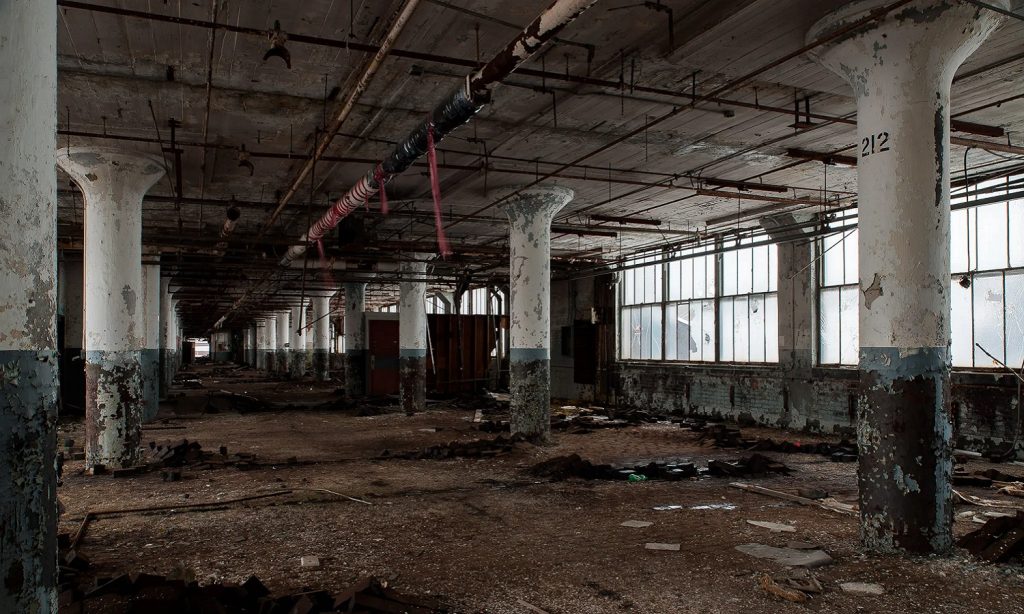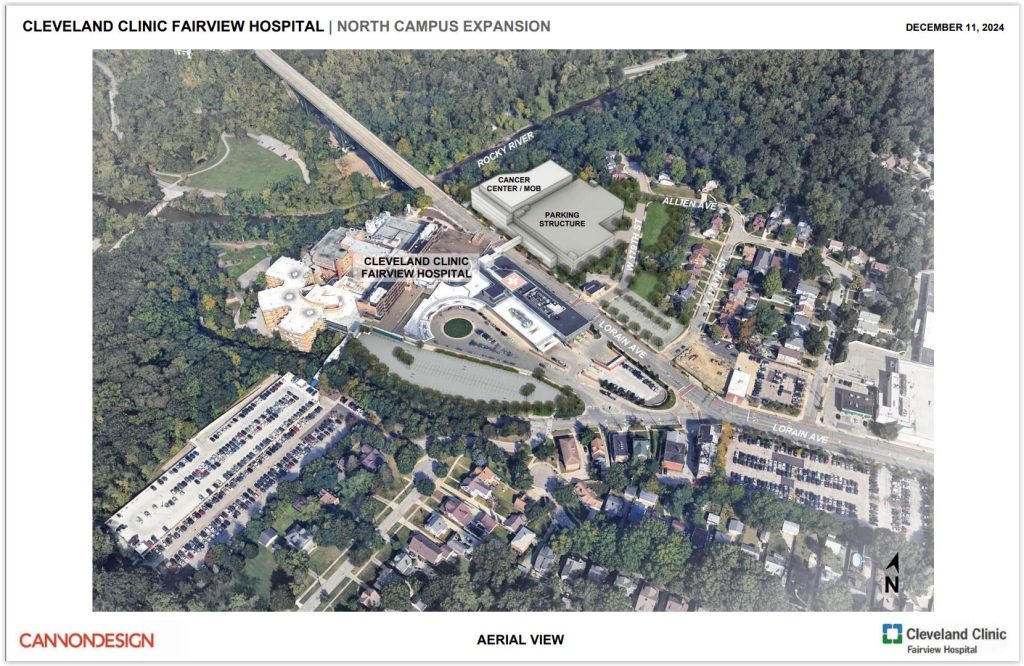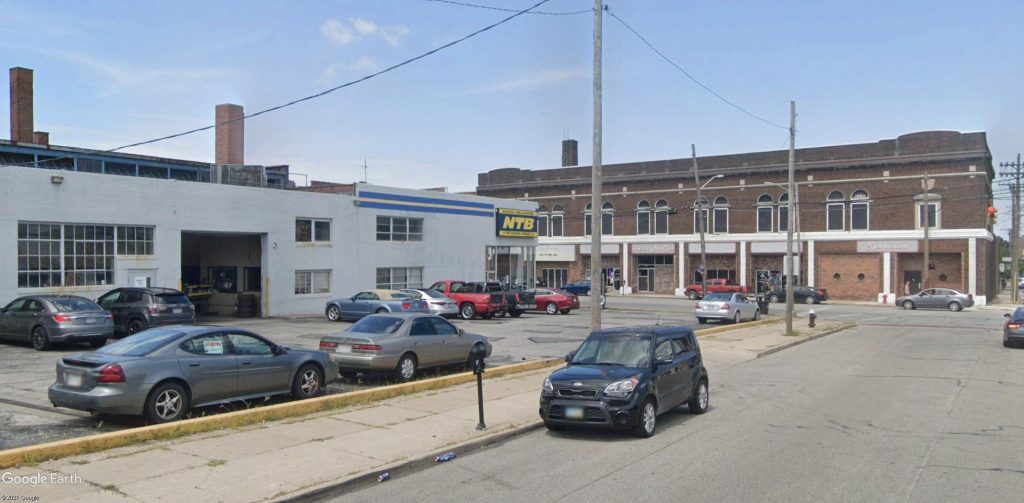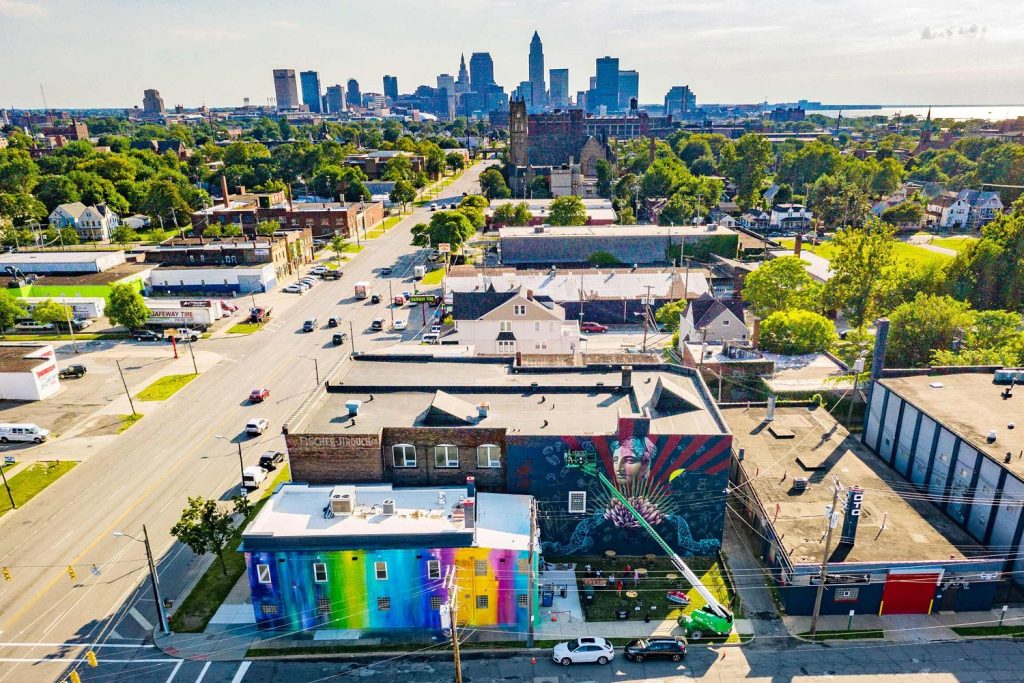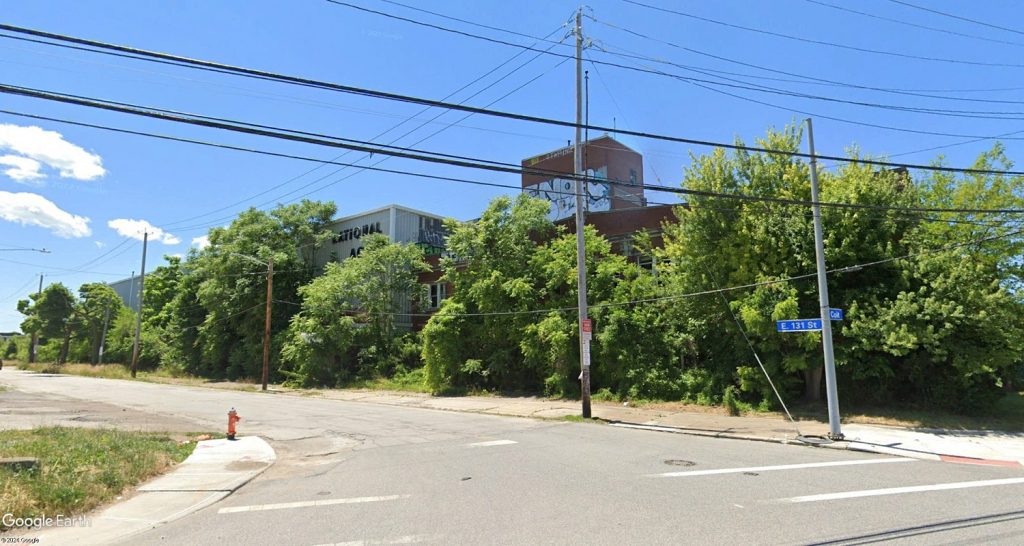
The abandoned National Acme plant on East 131st Street at Coit Road is getting swallowed up by Mother Nature. Demolition crews will soon lend a helping hand by taking down the once-prolific factory so the site, abused by its last user, can be returned to more uses in the near future (Google). CLICK IMAGES TO ENLARGE THEM.
National Acme plant will be razed, cleaned
It’s a factory name that conjures thoughts from classic Road Runner cartoons. But few are laughing from the enduring health and economic burdens that the long-closed National Acme plant, 170 E. 131st St., is having on Cleveland’s East Glenville and Collinwood residents. Once one of Cleveland’s largest blue collar employers, its fate is similar to that of other aging industrial properties across the city.
Now it offers the surrounding neighborhoods new opportunities thanks to $11.1 million that was amassed in recent days to demolish the rest of the factory, clean up the 13.4-acre site and return it to productive use. The site could attract a new industrial user who might offer hundreds of new, permanent jobs, according to the Cuyahoga Land Bank which acquired the tax-foreclosed property earlier this year via a sheriff’s deed transfer.
After that transfer, things began to look up for the site. It perked up a lot more when the land bank won a $7.6 million Ohio Brownfield Program site remediation grant. It was one of many such grants won by the land bank last week. And it got even better this week when the city of Cleveland provided $3.5 million via the new Site Readiness for Good Jobs Fund (SRF). The Cuyahoga Land Bank is SRF’s fiscal agent.
“Cleaning up this site is a priority for the community surrounding it,” said Ward 8 Councilman Mike Polensek in a written statement. His ward includes East Glenville and Collinwood Village. He recalled that his late uncle worked at National Acme in its heyday, but now dumpers, scrappers, vandals and rats have made the property a horrible hazard, impacting residents and nearby businesses.
“This redevelopment is not just about removing a public nuisance — it’s about revitalizing this neighborhood and bringing new opportunities to the greater community,” Polensek added, offering his sincere appreciation to his colleagues on Cleveland City Council, Mayor Justin Bibb’s administration and SRF for supporting the effort.
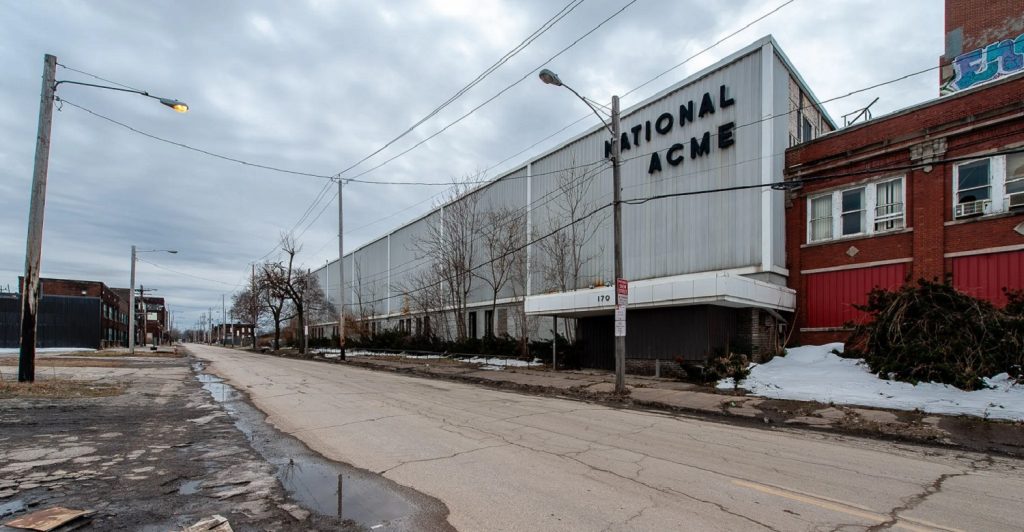
Just nine years ago in March 2015, the National Acme plant on East 131st Street was far less shrouded in vegetation, and not just because an enduring winter was keeping the leaves from blooming. But the lack of activity surrounding the plant showed it was no longer a going concern (abandedonline.net).
National Acme Manufacturing Co.’s factory was built in 1917 for the manufacture of machine tools. The company was formed in 1901 through the merger of the Acme Screw Machine Company of Hartford, CT and a new firm, National Manufacturing Company of Cleveland. Manufacturing operations were consolidated in Cleveland. Company growth required a new, larger factory, resulting in the construction of the East 131st plant that soon employed more than 1,000 workers.
National Acme became Acme-Cleveland Corp. in 1968 by merging with the Cleveland Twist Drill Co., founded in 1876. Company-wide, Acme-Cleveland had more than 15 factories and 6,300 employees in 1980 with annual revenues of about $5 billion, according to abandonedonline.net. But cheaper foreign competition soon eroded its business to the point the firm had to sell off pieces of itself to survive.
The East 131st plant was operated by DeVlieg-Bullard Inc. in 1995 and Acme-Cleveland’s stock was bought by Danaher Corp., a conglomerate. DeVlieg-Bullard filed for Chapter 11 bankruptcy in 1999, and the factory was sold to a real estate holding company Acme Realty LLC the next year. A portion of the plant was leased back to DeVlieg-Bullard but it steadily moved operations to a more modern plant in suburban Twinsburg.
Acme Realty leased the East 131st factory to All Points in 2011 for a cardboard and paper waste recycling facility. A portion of the factory was razed illegally; asbestos fibers were released into the environment during demolition. Also, piles of debris and asbestos were left out in the open, exposed to the wind and elements, subjecting nearby residents to multiple health hazards. In the 2010s, three men were convicted of felony charges stemming from their business operations at the factory.
A review of key economic, environmental and health data demonstrates the distress, disinvestment and decay of the community around the former National Acme plant. Median household income for the community averages about $27,787, well below the state’s median housing income of $61,938, according to the Cuyahoga Land Bank.
Also, the community’s 37 percent poverty rate is nearly triple the statewide rate, education levels fall well short of statewide averages and the community is riddled with vacant structures. Those living in the community are also exposed to greater environmental hazards than the average Ohioan, and are less healthy than most of the state.
“By transforming this site, we’re not only addressing an environmental and safety concern but also paving the way for job creation and neighborhood revitalization,” said Brad Whitehead, SRF’s managing director. “We look forward to seeing a community-minded business or development partner to join us on the redevelopment once the site is job-ready.”
SRF was established in August 2023 by Bibb in partnership with Cleveland City Council with $50 million in seed funding. It acquired its first property in April — the old Wellman-Seaver Engineering Co. in the Central neighborhood. This nationally unique nonprofit aims to breathe new life into 1,000 acres of neglected real estate, catalyzing the creation of 25,000 jobs, supporting neighborhood vitality, building wealth among residents and enhancing environmental sustainability.
“The National Acme site exemplifies the urgent need for projects like ours,” Whitehead added. “Addressing the challenges of contaminated and complex brownfield sites is crucial for unlocking their potential. Cleveland has the expertise and infrastructure to turn these sites into valuable assets that will benefit our community for generations.”
END

